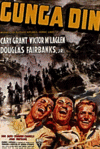Pages 7-16
This page-by-page annotation is organized by sections, as delineated by the seven squares (sprockets) which separate each section. The page numbers for this page-by-page annotation are for the original Viking edition (760 pages). Editions by other publishers vary in pagination — the newer Penguin editions are 776 pages; the Bantam edition is 886 pages.
Contributors: Please use a 760-page edition (either the original Viking edition with the orange cover or the Penguin USA edition with the blue cover and rocket diagram — there are plenty on Ebay for around $10) or search the Google edition for the correct page number. Readers: To calculate the Bantam edition use this formula: Bantam page # x 1.165. Before p.50 it's about a page earlier; as you get later in the book, add a page.
Finally, profound thanks to Prof. Don Larsson for providing the foundation for this page-by-page annotation.
Page 9
9.03 Miss Grable
Betty Grable actually became a pin-up favorite in 1943 (not 1944), when she had a photo series released. Although she had been featured in various films since the late 1920s, she first became a major box office attraction with the 1940 film Down Argentine Way. The poster is also an example of the motif of the turning head that recurs throughout Gravity’s Rainbow. Correspondent Hazen Bob Dixon notes that Grable was actually pregnant when the picture was taken, which is why her back was turned in the first place. The story is plausible, since Grable did give birth to a daughter (by her husband, band leader Harry James) in March 1944; however, there are other versions of how the image came to be taken.
9.05 Civvie Street
In other words, Peacetime, when military personnel will again wear civilian clothes ("civvies"). George Formby had a postwar film titled George in Civvy Street (1946). See note at 18.25.
9.29 Jungfrau
Correspondent Igor Zabel notes that the name of the famous mountain actually means "Virgin." Matthias Bauer adds:
"The name of the mountain means virgin`` in 20th century German. Translated from Kluge Etymologisches Wörterbuch der deutschen Sprache``, 23th edition, de Gruyter, Berlin, New York, 1999: originally meaning young lady, later generalized to young (unmarried) woman. Mysticism used the word for the Virgin Mary, and the meaning shifted towards young (virgin) woman."
9.14-19 Bartley Gobbitch, DeCoverley Pox . . . SNIPE AND SHAFT, Teddy Bloat
"Gobbitch" comes from the archaic word "gobbet," which Webster’s New World Dictionary defines as "a fragment or bit, especially of raw flesh." The names "Pox" and "Bloat" are obvious enough, but "DeCoverley" comes from Sir Roger Decoverley, the prototypical country squire created by Addison and Steele for the Spectator and named in turn for a country reel dance. Overall, the names suggest another version of the "Whole Sick Crew" of Pynchon’s V. "Snipe" (backbite, take potshots) and "shaft" (undercut, screw over) are what these men are presumably assigned to do to others in their various bureaucratic jobs and what they do in conversations at the eponymous pub.
Page 11
11.25 his batman, a Corporal Wayne
Page 13
13.20 during his Kipling period, beastly Fuzzy-Wuzzies
Contrary to Weisenburger, the Fuzzy-Wuzzies were actually the Sudanese natives fighting against (not conscripted for) the British. Here, Pirate is thinking not of the novels of the arch-apologist for Empire but of such Kipling poems as "Fuzzy-Wuzzy" in which a British soldier declares his grudging admiration for the natives’ fighting spirit.
13.34 No Cary Grant . . . medicine in the punchbowls
Page 14
14.07 H.A. Loaf
As in "Half a loaf is better than none"?
14.30-31 It was a giant Adenoid!
Correspondent Erik Johnson adds the following in relation to the references to the Adenoid here and at 754.38:
"An adenoid is an enlarged mass of lymphoid tissue at the back of the pharynx characteristically obstructing breathing--usually used in plural. I believe it's likely that Pynchon is also making reference to 'Adenoid Hynkel,' the character of the dictator (and mockery of Hitler) played by Charlie Chaplin in the film The Great Dictator.
14.34 Lord Blatherard Osmo
To "blather" is to talk on foolishly (the reason for his mysterious death?). "Osmo" suggests "osmosis," the process by which the giant Adenoid would absorb its victims.
14.04 Redcaps
| 1 Beyond the Zero |
3-7, 7-16, 17-19, 20-29, 29-37, 37-42, 42-47, 47-53, 53-60, 60-71, 71-72, 72-83, 83-92, 92-113, 114-120, 120-136, 136-144, 145-154, 154-167, 167-174, 174-177 |
|---|---|
| 2 Un Perm' au Casino Herman Goering |
181-189, 189-205, 205-226, 226-236, 236-244, 244-249, 249-269, 269-278 |
| 3 In the Zone |
279-295, 295-314, 314-329, 329-336, 336-359, 359-371, 371-383, 383-390, 390-392, 392-397, 397-433, 433-447, 448-456, 457-468, 468-472, 473-482, 482-488, 488-491, 492-505, 505-518, 518-525, 525-532, 532-536, 537-548, 549-557, 557-563, 563-566, 567-577, 577-580, 580-591, 591-610, 610-616 |
| 4 The Counterforce |
617-626, 626-640, 640-655, 656-663, 663-673, 674-700, 700-706, 706-717, 717-724, 724-733, 733-735, 735-760 |

